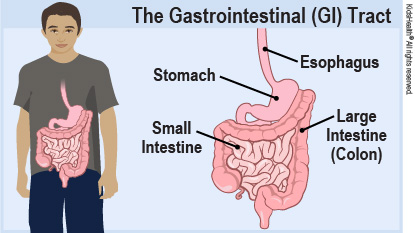Eosinophilic Gastroenteritis: How to Care for Your Child
Kids with eosinophilic gastroenteritis have too many eosinophils (a type of white blood cell) in the lining of their stomach and intestines. Having too many eosinophils (ee-uh-SIN-eh-filz) makes the walls of the stomach and intestines thicken and swell. Eosinophilic (ee-uh-sin-eh-FIL-ik) gastroenteritis can cause stomach pain, nausea, vomiting, diarrhea, and loss of appetite. In many kids, this is a long-term condition that flares up at times. Your health care provider may recommend diet changes or other treatments.


-
Give your child any prescribed medicine.
-
Follow the health care provider's suggestions for your child's diet.
-
If your child was referred to an allergist or dietitian, be sure to schedule the appointment.

Your child:
-
feels worse
-
doesn't feel better after several weeks of treatment
-
has belly pain that gets worse
-
has blood on toilet paper or in the toilet after a bowel movement (poop)
-
has constipation (poops less often than usual) or can't have a bowel movement at all
-
can't swallow food
-
complains of feeling like there's something stuck in the throat
-
is losing weight
-
develops other new problems

Your child:

What causes eosinophilic gastroenteritis? The cause of eosinophilic gastroenteritis is not clear. It may run in families, and it sometimes happens in kids who also have allergies, asthma, or eczema.
How is eosinophilic gastroenteritis treated? Eating a special diet or avoiding certain foods helps many kids with this condition feel better. Medicines also might help. In children who have a more serious case of eosinophilic gastroenteritis, prednisone or budesonide (steroids) may be used for a short time. With treatment, flare-ups should happen less often and won't be as bad.